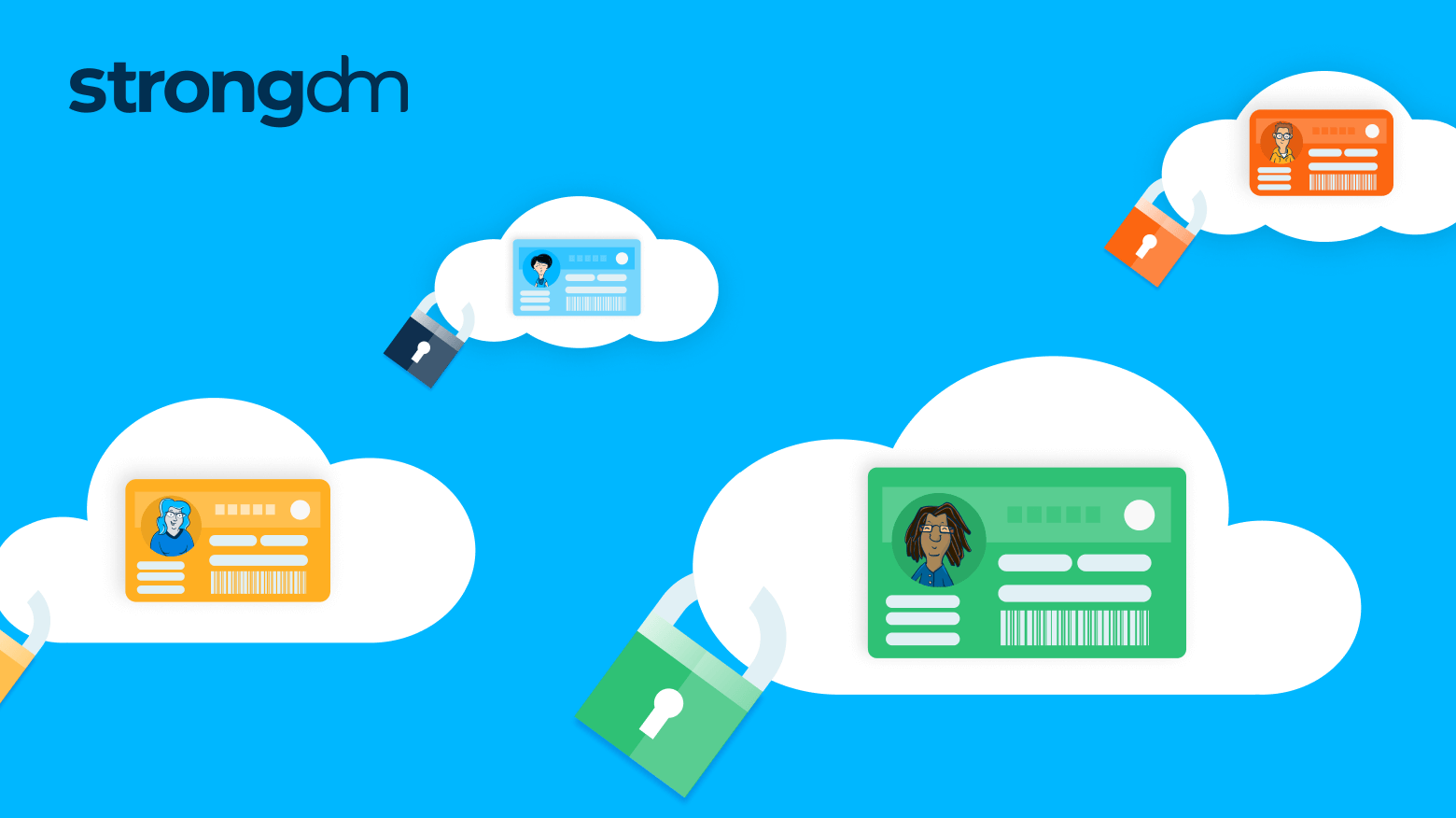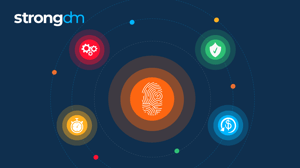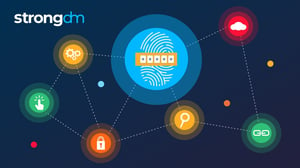What is Identity as a Service (IDaaS)? All You Need to Know


Written by
Schuyler BrownLast updated on:
October 17, 2025Reading time:
Contents
Built for Security. Loved by Devs.
- Free Trial — No Credit Card Needed
- Full Access to All Features
- Trusted by the Fortune 100, early startups, and everyone in between
Summary: In this article, we’ll examine what Identity as a Service (IDaaS) is and how companies use IDaaS to enhance their security posture. You’ll learn why identity and access management (IAM) is important, how outsourcing IAM can support your goals, and the limitations of using a cloud-based IDaaS. By the end of this article, you’ll understand how an IDaaS solution works, the problems IDaaS addresses, and the role IDaaS will play in the future of identity management.
What is IDaaS?
Identity as a Service (IDaaS) is a cloud-based subscription model—like Software as a Service (SaaS)—that allows businesses to outsource identity and access management tasks to a third-party provider.
Companies need identity and access management (IAM) technology to verify user identities and manage access across multiple systems and applications. IDaaS providers offer companies a scalable way to control permissions, track system usage, and maintain detailed logs without managing on-premises IAM software.
Cloud-based IDaaS solutions also allow companies to introduce security features like single sign-on (SSO) and multi-factor authentication (MFA) that integrate with all internal systems. With these tools, a company can improve its security posture while providing employees with the right resources at the right times.
History of IDaaS
Digital identity management has been a critical security element for many companies since the late 1990s. The need for IAM technology was first answered with enterprise software like Microsoft’s Active Directory, which was introduced as part of the Windows 2000 operating system. However, most smaller organizations couldn’t access enterprise IAM technology because of costly implementations and ongoing maintenance needs.
These challenges paved the way for remotely managed, third-party software solutions like Salesforce’s CRM in the early 2000s. SaaS solutions allowed companies to access the benefits of software without the expense or security risks of maintaining an on-premises solution. Cloud-based SaaS technology also made it easy for companies to integrate software throughout their tech stack, including multiple cloud environments and third-party tools.
Now, many IAM software providers offer cloud-based IDaaS, meaning access management technology is available to companies of all sizes without a large upfront investment. IDaaS solutions are rapidly gaining popularity, as demonstrated by the $3.99 billion market size in 2021.
Why is IDaaS Important?
Identity-related cyberattacks pose a significant threat to most modern organizations. As companies’ tech stacks continue to grow, these businesses face more challenges maintaining their security perimeter and preventing breaches. Limiting user access is essential to help companies reduce these security risks. Considering that 84% of companies experienced an identity-related data breach in 2021, it’s clear that the need for IAM tools is increasing.
IDaaS makes those vital access management and identity verification tools available to nearly any organization. These solutions are important because they help organizations integrate security features into multiple on-premises and cloud-based systems and tools. With a single cloud-native IAM solution, companies use one tool to track and manage user access across their entire IT infrastructure.
Alongside preventing breaches, identity as a service also plays a substantial role in helping organizations meet ever-evolving regulatory compliance standards and data privacy requirements. With IDaaS, companies can maintain detailed logs and readily access reports on usage, which they can use to conduct internal audits or submit to auditors and regulators.
Benefits of IDaaS
IDaaS solutions make IAM technology accessible for any business, regardless of how many users they have or applications they use. With IDaaS technology, organizations can maintain full control over which users have access to which resources without incurring the costs of on-premises software.
The subscription model allows companies to access more innovative technology with a lower initial investment and affordable monthly cost per user. As companies grow, they can easily expand their usage by adding more users and integrations. Plus, security teams can use IDaaS to save time on administrative tasks by leveraging automation and accessing multiple IAM tools within a single platform.
Companies can better support hybrid and remote work styles with IDaaS, too. For example, IDaaS SSO can provide a streamlined user experience for employees working on multiple devices and using a variety of applications. By outsourcing IAM software security to a device IDaaS vendor, companies can enable remote work knowing their IT infrastructure is secure.
Limitations of IDaaS
Outsourcing software means trusting a vendor to keep the company’s data secure. IAM technology manages sensitive employee information like passwords, answers to security questions, and biometric data. If an IDaaS provider experiences a data breach, all of this data may be at risk of exposure. While on-premises IAM solutions are more costly and challenging to maintain, they allow companies to keep sensitive data in-house and manage their own security.
Plus, since many in-house IAM strategies involve disparate tools—like a separate MFA solution and SSO tool—companies that keep IAM on premises may expose less sensitive data during a cyberattack.
How Does IDaaS Work?
Most people who ask, “What is identity as a service?” are curious about how outsourcing access management can work. IDaaS platforms provide security services for applications, networks, and systems through an Application Program Interface (API). That API gateway presents a consistent login page everywhere a user needs to enter their credentials across the company’s IT infrastructure.
When a user enters their credentials on this login page, the API sends the identity provider (IdP) an authentication request. The IDaaS system consults a user directory filled with access controls and permission data to verify the user’s identity and determine if that user can access the service they are attempting to use.
Once the system identifies the user, the API delivers a security token to the application with information about the user, including what elements of the application the user is authorized to access. This security token grants the user access to the application.
The IDaaS provider records every interaction users have with the API and generates comprehensive logs for auditing, reporting, and metrics through a dashboard within the identity as a service platform.
IDaaS Requirements
IDaaS in cloud computing combines many essential IAM features into a single platform. To be an effective platform, the IDaaS solution must support:
- Single sign-on (SSO)
- Multi-factor authentication (MFA)
- User identity management
- Access provisioning capabilities
- Cloud directory services or directory integration
These identity as a service examples work together to provide comprehensive access management and user verification capabilities for both internal employees and external users like vendors or customers.
By combining these elements into a single tool, businesses can provide users with a more streamlined access experience while using multiple applications. Plus, companies have detailed access to data for regulatory compliance and audit requirements.
IDaaS vs. IAM
When a business asks, “what is IDaaS?” they’re often looking for a solution to support their identity and access management (IAM) needs. Identity management as a service is essentially an IAM SaaS product.
IAM is an overarching security term referring to any software, policies, procedures, and platforms used to control or track application usage. IAM solutions store detailed user identities and permission information for those users based on predetermined access controls. A cloud identity as a service platform is one way to manage some or all of a company’s identity-related security needs.
Even after a company starts using an IDaaS provider, they still need to define access controls and policies that guide their automation workflows and enable data consistency. Those controls and policies are part of the company’s IAM strategy.
The Future of IDaaS
Modern security teams have many tasks on their plates, and identity and access management workflows can involve a lot of manual work with on-premises IAM solutions. Companies are adopting more cloud-based applications each year, and many are seeing a dramatic increase in user identities, including third-party users and machine identities. These shifts will make identity as a service in cloud computing increasingly more important to control access, validate user identities, and track usage.
To keep up with regulatory compliance requirements and privacy laws, companies need a constant record of all the users that access their systems and a detailed account of their login activity. IDaaS provides the automated logging companies need to meet evolving privacy regulations and audit needs.
IAM is becoming nearly impossible to manage manually. Manual access management presents a constant security risk. Identity management as a service makes automation easily available to companies, allowing them to maintain full control over their resources and implement vital security controls.
How StrongDM Can Help with IDaaS
On-prem IAM solutions are a thing of the past. Now, companies need a comprehensive cloud-native platform to manage and automate their access management workflows, no matter what systems users need to access. That’s where StrongDM’s Zero Trust PAM platform comes in.
StrongDM specializes in helping organizations rule all access from one centralized platform. With StrongDM’s IAP solution, companies can manage authentication and authorization from a single control plane. Plus, teams gain exceptional observability across the entire IT infrastructure to ensure that the right people always have access to the right resources at the right time.
Streamline IAM with StrongDM
Access management involves a lot of moving parts, especially as organizations adopt more cloud technologies. Manual workflows leave room for important IAM tasks to fall through the cracks, leaving companies exposed to cyberattacks and compliance violations. Now is the time for companies to ditch antiquated on-prem tools for a reliable IDaaS solution.
See the difference StrongDM can make for your organization. Sign up for our 14-day free trial today.
Next Steps
StrongDM unifies access management across databases, servers, clusters, and more—for IT, security, and DevOps teams.
- Learn how StrongDM works
- Book a personalized demo
- Start your free StrongDM trial

Categories:

About the Author
Schuyler Brown, Chairman of the Board, began working with startups as one of the first employees at Cross Commerce Media. Since then, he has worked at the venture capital firms DFJ Gotham and High Peaks Venture Partners. He is also the host of Founders@Fail and author of Inc.com's "Failing Forward" column, where he interviews veteran entrepreneurs about the bumps, bruises, and reality of life in the startup trenches. His leadership philosophy: be humble enough to realize you don’t know everything and curious enough to want to learn more. He holds a B.A. and M.B.A. from Columbia University. To contact Schuyler, visit him on LinkedIn.
You May Also Like




